Table of contents
Wholegrain rice, long grain ( Oryza sativa ssp. indica), is unhulled, unpolished long grain rice ( organic) that has a nutty taste when cooked. With natural rice or brown rice, only the husks are removed; the silver skin and germ remain on the rice grain, which means that many valuable vitamins and minerals are retained.
Using whole grain rice in the kitchen:
Is brown rice whole grain rice? Brown rice can also be called whole grain rice. Long grain whole grain rice tastes cooked slightly nutty and stronger than white long grain rice. Non-sticky whole grain rice (long grain) is served as a side dish with curries, stews or soups. Together with briefly fried vegetables, you can easily prepare vegetable rice, a rice dish or rice casserole. Medium-grain whole grain rice is also suitable for such brown rice recipes. Whole grain rice also tastes excellent as a filling in vegetable dishes, e.g. in sweet peppers, giant mushrooms, zucchini or pumpkin (e.g. butternut). Cooked and cooled, brown rice can be made into a rice salad with refreshing ingredients such as tomatoes, cucumbers, rocket and fresh herbs such as basil, parsley or chives.
Other well-known whole grain rice varieties include black rice and sweet brown rice (mochi rice), although mochi rice is always sticky.
If you take into account the longer cooking times of brown rice (see wholegrain rice, natural rice), you can also prepare it mixed with white rice. This way, the natural rice does not taste as intensely nutty and you still benefit from the health advantages of brown rice.
For a portion as a side dish, you need about 60 g of raw rice, and for a main course, about 100-120 g per person. Depending on the water absorption capacity of the rice variety, the raw amount can double or triple when cooked.
Recipe for vegan wholegrain basmati rice casserole:
Ingredients (for 4 people): 200 g wholegrain basmati rice (organic), 2 onions, 2 cloves of garlic, 2 carrots, 1 red bell pepper, 1 zucchini, 120 gcorn kernels (cooked), 460 ml chopped tomatoes (canned), 250 ml oat cream, 100 g vegan cheese, 1 tsp rapeseed oil (refined), 1 tsp paprika powder, salt andpepper.
Preparation: Cook the basmati wholegrain rice (organic) according to the instructions on the packet until al dente. Peel the onions, garlic cloves and carrots and cut into cubes. Wash the sweet peppers and zucchini and also cut into cubes of roughly the same size. Gently sauté the onions and garlic in a hot pan with refined rapeseed oil. Add the carrots, sweet peppers and zucchini and fry briefly. Add oat cream and tomatoes to deglaze. Add the corn, salt, pepper and season with paprika powder. Let the whole thing simmer at a low temperature, then mix in the wholegrain basmati rice and simmer for around 15 minutes until the rice has absorbed most of the liquid. Pour the contents of the pan into a casserole dish, sprinkle with vegan cheese and bake for 5-10 minutes in an oven preheated to 180 °C using top and bottom heat. The vegan wholegrain rice casserole is ready.
Vegan recipes for whole grain rice (cooked, long grain) can be found under the note: " Recipes that have the most of this ingredient ".
| Not only vegans or vegetarians should read this: Vegans often eat unhealthily. Avoidable nutritional errors. |
Shopping - where to buy cooked wholegrain rice?
Wholegrain rice (natural rice) can be found in all supermarkets such as Coop, Migros, Denner, Volg, Spar, Aldi, Lidl, Rewe, Edeka, Hofer etc. It is not always clearly marked whether it is long-grain wholegrain rice or short-grain rice. Wholegrain rice is usually available raw and loose in boxes or plastic bags, sometimes in portioned cooking bags (for cooking pots or microwaves). Occasionally you can find cooked wholegrain rice, i.e. pre-cooked and sealed in freshness bags, on the shelves. Organic supermarkets (e.g. Denn's Biomarkt and Alnatura), health food stores, Asian shops and online shops have a large selection of natural rice (long-grain), including organic quality (organic).
Storing whole grain rice (long grain):
How long does cooked rice last? Brown rice (cooked) can be kept properly cooled for up to two days in the refrigerator, ideally in a tightly sealed container. If you want to store rice (cooked) for longer, you can also freeze it. When reheating, heat the entire rice to at least 70 °C to kill any bacteria (e.g. Bacillus cereus). 14 The microwave is less suitable for this.
If you store raw long-grain wholegrain rice, you should do so in a dark, cool and dry place. This way it will last for about a year. White, peeled rice will last longer because the silver skin and germ, which promote rancidity, are no longer present. You should not store raw long-grain wholegrain rice next to foods with strong odors such as spices, coffee, tea or chocolate, because the rice grains will otherwise take on their odor.
Brown rice ingredients - nutritional values - calories:
What is rice made of? Cooked long-grain brown rice has 123 kcal per 100 g. Due to the absorption of cooking water, this figure is much lower than for raw brown rice (362 kcal/100g). Cooked brown rice has 26 g of carbohydrates per 100 g, of which 1.6 g is fiber. The protein content of cooked long-grain brown rice is 2.7 g/100g and there is also very little fat at 0.97 g/100g. 1
The manganese content of long-grain wholegrain rice (cooked) is 0.97 mg/100g, which covers 49% of the daily requirement. Rice loses a high percentage of this trace element through cooking: raw wholegrain rice has 3.7 mg/100g. Since manganese is contained in the outer layers, rice also loses a large amount through peeling or polishing, as can be seen in white sticky rice (0.97 mg/100g). Cooked chickpeas can be compared to cooked wholegrain rice in terms of manganese content. Spices contain a lot of manganese, such as cloves with 60 mg/100g or saffron with 28 mg/100g, but you only consume very little of it. 1
Niacin (ex vitamin B3) is present at 2.6 mg in 100 g of cooked wholegrain long-grain rice (16% of the daily requirement). A similar amount of niacin can be found in cooked kamut (2.3 mg/100g) and macadamia nuts (2.5 mg/100g). Wheat bran contains a high proportion of niacin at 14 mg/100g and sea buckthorn berries surpass almost all other ingredients at 743 mg/100g. 1
Brown rice (long grain, cooked) contains 0.18 mg thiamine (vitamin B1), which means that 100 g cover about 16% of the daily requirement. Cooked kidney beans and cooked lentils have a similar thiamine content. A high thiamine content can be found in yeast flakes, for example (41 mg/100g). 1
Note: The nutrients and ingredients of wholegrain rice depend on the variety, environmental conditions, growing area and cultivation techniques, as well as preparation. Wholegrain rice generally contains more fiber, vitamins and trace elements than white rice. 2 In particular, the content of magnesium, calcium, iron, zinc, vitamin E, vitamin B1, vitamin B2 and vitamin B3 is higher in wholegrain rice.
The complete ingredients of whole grain rice (cooked), the coverage of the daily requirement and comparison values with other ingredients can be found in our nutrient tables. In the article Nutrients explained you will get a detailed insight into the topic. CLICK FOR under the ingredient picture.
Health aspects - effects:
With wholegrain rice or natural rice, there is no need to peel, grind or polish the rice grains. Healthy vital substances and the high fiber content are retained. Secondary plant substances such as phenolic acids, flavonoids, γ-oryzanol and GABA ('gamma-aminobutyric acid' or γ-aminobutyric acid - especially in germinated wholegrain rice) are included. 2 Phytic acid can also be found in the outer layers of wholegrain rice grains. By soaking wholegrain rice before cooking, the phytin content can be reduced. On the one hand, phytic acid is said to bind minerals from food that are no longer available to the body. On the other hand, it is said to have an antioxidant effect, which is even said to have a preventive effect against colon cancer. 3 Here you can find more information about phytic acid or phytate and about soaking or sprouting.
Rice is generally known for its supportive effect after gastrointestinal inflammation or colon inflammation. It is easily digestible and stimulates the intestinal mucous membranes to rebuild due to its slightly astringent effect. 4
Brown rice, like all rice, is gluten-free and therefore suitable for people with celiac disease, gluten intolerance or gluten sensitivity. 4 However, pay attention to warnings about foreign traces on the product packaging, as some machines that process grains containing gluten are also used to process gluten-free products. The symbol with the crossed-out ear of corn is a sign of a gluten-free product.
Compared to white rice, wholegrain rice not only contains more vitamins and minerals, but is also more filling. After a wholegrain rice meal, hunger does not return much later. This makes it popular for a change in diet with a focus on weight loss. 2,4
Brown rice has a lower glycemic index (GI) than white rice. Blood sugar levels rise more slowly. The risk of developing type 2 diabetes increases with frequent consumption of white rice. 6 On the other hand, the risk of developing diabetes can be reduced by regularly consuming brown rice. 15 This article shows that a plant-based diet can prevent or cure type 2 diabetes.
Dangers - intolerances - side effects:
In many growing regions, fertilizers and pesticides are used to grow rice. The groundwater in these regions is therefore heavily contaminated with the heavy metals arsenic and cadmium. These toxins are absorbed through the roots of the rice plants and the heavy metals accumulate in all parts of the plant. Arsenic is mainly found in the outer layers of the rice grains. This is why unpeeled brown rice is usually more contaminated with arsenic than peeled white rice. These heavy metals are considered to be possible cancer triggers and can endanger the development of unborn children. 7 By soaking wholegrain rice for several hours and washing it thoroughly, the content of any pollutants present can be reduced somewhat. In addition, brown rice should be cooked using the water method, i.e. with plenty of water, and the pollutants dissolved in the cooking water should be thrown away after the cooking time has ended. 8
Not only rice can be contaminated, but also rice-based products such as rice cakes and rice flakes. Small children absorb arsenic more easily than adults, which is why children under three years of age should not be fed primarily rice and rice products. 9 Since 2016, an EU regulation has regulated the maximum levels of arsenic in rice and rice products. 12
Folk medicine - natural healing:
Congee is a rice soup from traditional Chinese medicine ( TCM) that is said to help with gastrointestinal complaints, kidney problems and allergies. In children with acute diarrhea, this soup is very effective and inexpensive, in addition to the standard treatment with rehydration solutions and zinc therapy. 10 It seems that the results also depend on the type of rice used. 10 At least according to a study on rats, a high amylose content (as in long grain rice) is said to have a reliable effect against diarrhea. 18 If the digestive system is very sensitive, white rice is traditionally used. A healthier option, however, is soup made from whole grain rice.
As part of a fasting cure, the unsalted soup can be used for detoxification and drainage.
The starch contained in rice has an anti-irritant effect, which is useful when used as a powder (sprinkling powder) or enema (enema). 5 Rice starch can also be used as a mild bath additive for babies and small children.
Occurrence - origin - ecology:
The origin of the rice plant Oryza sativa is thought to be in Southeast Asia. However, there are Oryza species in South America, Asia and Africa, which is why it is assumed that there were three independent domestication centers. Humans have probably been cultivating rice for over 6,000 years. 11 It is assumed that unhulled rice, i.e. whole grain rice, was used as food at that time. It was not until much later that the processes of hulling and polishing were invented and people began to eat white rice.
More than 90% of the world's rice crop comes from the main growing areas in Asia (China, India, parts of Southeast Asia), where rice is still considered a staple food. 11,13
Cultivation - Harvesting of whole grain rice, long grain:
For more detailed information on the cultivation, harvesting and ecological aspects of rice, see the ingredient whole grain rice.
General information:
Rice, a plant from the grass family (Poaceae) and the genus Oryza, is usually divided according to the length of the grain. The following subgroups are known: Long grain rice ( Oryza sativa ssp . indica : Rice grains over 6 mm) and short grain rice ( Oryza sativa ssp. japonica : approx. 3-5 mm). But also medium grain rice ( Oryza sativa ssp. javanica : 5-6 mm) is often found as a subgroup. Even sticky rice ( Oryza sativa var. glutinosa) can now be found as a separate variety. 16
Every type of rice is available in brown (whole grain) and white, i.e. unpeeled and peeled. Basmati rice and jasmine rice are also available as whole grain rice. Often, however, only the white versions of the varieties are available, such as Sadri Dudi rice (Sadri Dudi rice) - smoked Sadri rice from Iran with an intense smoky aroma - or Patna rice. Mochi rice or red rice from the Camargue or Sri Lanka are popular whole grain rice varieties for delicatessens, and are therefore never found peeled. Risotto rice (usually short grain or medium grain rice) is also available in peeled and unpeeled versions, but (like Mochi rice) is stickier.
Is wild rice the same as whole grain rice? Wild rice (water rice) belongs to the genus Zizania and is therefore botanically not rice at all (genus Oryza).
Alternative names:
Long grain whole grain rice has the following synonyms (including incorrect spellings): whole grain long grain rice, brown rice, natural rice (natural rice), natural grain rice, whole grain natural rice, cargo rice, whole rice, whole grain rice, whole grain rice, brown long grain rice, unhusked rice, integral rice (integral rice), whole grain rice.
In English, whole grain rice is called brown rice, unpolished rice and whole grain rice (whole-grain rice); long grain rice is called long grain rice (long-grain rice). On packages, other language creations such as Vollkorn Rice sometimes appear.
By the way, the name "Mochi Sadri Dudi Patna" is not entirely correct: Patna is in East India and "mochi" is Japanese for rice cakes made from sticky rice (= mochi rice); Sadri rice is said to be the best rice in the world in many places. We keep getting questions about it, so we'll explain it here.
Keywords for use:
Waste products and by-products of rice processing that are not suitable for human consumption can be used to produce rice oil, wax and protein-rich feed flour. The husks of rice grains can be used for building boards and as polishing and fuel. Rice straw is used in livestock farming and as a weaving material for mats, sacks and hats. 17
Literature - Sources:
Bibliography - 18 Sources
| 1. | USDA United States Department of Agriculture. |
| 2. | Saleh ASM, Wang P, Wang N, Yang L, Xiao Z. Brown rice versus white rice: nutritional quality, potential health benefits, development of food products, and preservation technologies. Comprehensive Reviews in Food Science and Food Safety. 2019; 18(4): 1070-1096. |
| 3. | Graf E, Eaton JW. Suppression of colonic cancer by dietary phytic acid. Nutrition and Cancer. 1993; 19: 11-19. |
| 4. | Roger JDP. Heilkräfte der Nahrung. Advent-Verlag: Zürich. 2006: 212-215. |
| 5. | Pahlow M. Das grosse Buch der Heilpflanzen. Gesund durch die Heilkräfte der Natur. Nikol: Hamburg. 2013:471. |
| 6. | Hu EA, Pan A et al. White rice consumption and risk of type 2 diabetes: meta-analysis and systematic review. BMJ. 2012; 344. |
| 7. | Chanpiwat P, Hensawang S, Suwatvitayakorn P, Ponsin M. Risk assessment of bioaccessible arsenic and cadmium exposure through rice consumption in local residents of the Mae Tao Sub-district, Northwestern Thailand. Environ Geochem Health. 2019; 41(1): 343-356. |
| 8. | BfR Bundesinstitut für Risikobewertung. Fragen und Antworten zu Arsengehalt in Reis und Reisprodukten. 2020. |
| 9. | Bayerisches Landesamt für Gesundheit und Lebensmittelsicherheit. Untersuchung von anorganischem Arsen in Kindernahrung - Untersuchungsergebnisse 2010 und 2011. 2012. |
| 10. | Kanmehr M et al. The Effect of G-ORS Along With Rice Soup in the Treatment of Acute Diarrhea in Children: A Single-Blind Randomized Controlled Trial. Nurs Midwifery Stud. 2016; 5: e25852. |
| 11. | Brücher H. Tropische Nutzpflanzen. Ursprung, Evolution und Domestikation. Springer-Verlag Berlin Heidelberg: New York; 1977: 57-68. |
| 12. | Verordnung (EU) 2015/1006 der Europäischen Kommission zur Änderung der Verordnung 1881/2006 hinsichtlich der Höchstgehalte für anorganisches Arsen in Lebensmitteln. |
| 13. | Fao.org Produktionsstatistik der FAO 2019. |
| 14. | Ages.at Bacillus cereus. 2020. |
| 15. | Sun Q. White rice, brown rice, and risk of type 2 diabetes in us men and women. Arch Intern Med. 14. Juni 2010;170(11):961. |
| 16. | Pflanzenforschung.de Weltnahrungspflanze Reis. |
| 17. | Rehm S, Espig G. Die Kulturpflanzen der Tropen und Subtropen. Ulmer Eugen Verlag: Stuttgart; 1976. |
| 18. | Felipoff AL, Zuleta A, Sambucetti ME, Rio ME. Not any type of rice performs equally to improve lactose-induced diarrhea characteristics in rats: is amylose an antidiarrheal factor? Food Sci Technol. 2012; 32(2):323–8. |

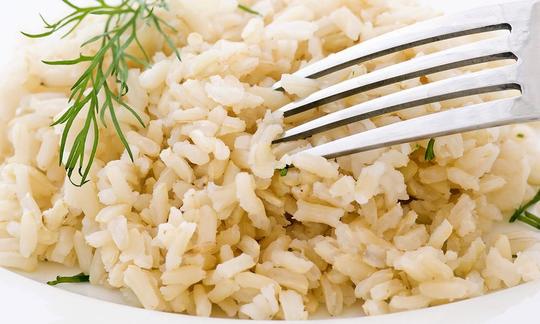

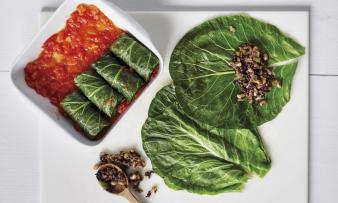
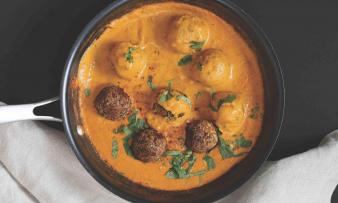

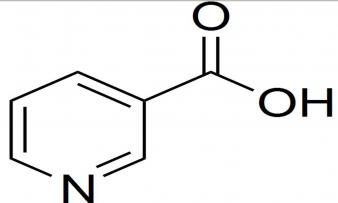
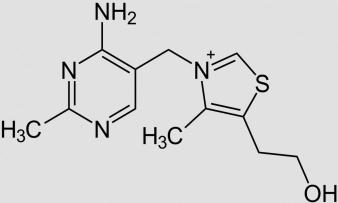


Comments